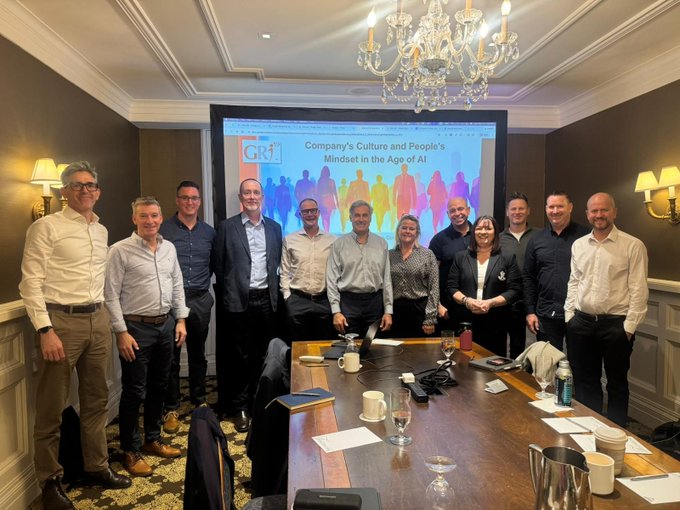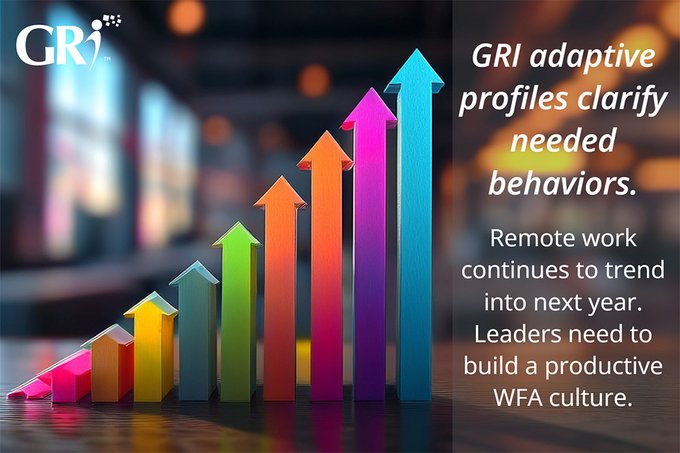Building Hard-Core Soft Leadership Skills
Posted by Frederic Lucas-Conwell

Building Hard-Core Soft Leadership Skills
Soft skills are in higher demand than ever. In a world where automation and machine learning are starting to take over the menial, rote tasks at work, soft skills are becoming the differentiator. These are the skills that allow us to communicate with tact, motivate teams, smooth friction and conflict, and even to learn and develop other skills. They are needed to attract, hire, retain, motivate, and organize the talents required for a company to thrive.
“Soft” is a bit of a misnomer. They are sometimes called “behavior skills” to contrast them with technical skills; or “power skills”, underlining the control it provides when mastering them(1). Other times they are called social skills; some refer to them as emotional intelligence. But for those who are in command of a team or a company, let’s call them the soft leadership skills.
Soft skills are not “soft” because they are easy, or gentle but because they are hard to pin down. Technical skills on the contrary, such as coding in Python, involves a well-defined language with clearly spelled out outcomes. But knowing how to motivate a team of people uses natural language that is malleable and carries ambiguity.
These changeable soft leadership skills can be developed in everyone, from a core of our personality that’s consistent—or “hard” if you will—and reflects how we can distinctly perform at our best.
Mastering this hard core will enable development of soft leadership skills at much higher speed.
Pressure and Opportunity From the Future of Work
A recent survey from the company Jobvite provides insightful data(2):
- 33 percent of new employees quit in 90 days.
- A quarter of candidates reject a potential employer due to reviews on Glassdoor.
- 82% of job seekers are open to new job opportunities.
The reasons: company culture; absence of individual attention; lack of soft leadership skills.
Other analyses from Gallup and companies specializing in employee engagement and performance reviews concur with these findings(3).
Everyone has by now heard about being mindful and having purpose at work, and because of this, flourishing in both life and work. It sounds good, but it’s not clear how we make this happen for most employees. Some companies seem to achieve this, or something close with ease, while others try but fail, and still others don’t try at all. One thing is clear, though—a one-size-fits-all approach will not work.
Individuals are not sure about how to get to purpose and engagement at work, but leaders may seize this opportunity to be proactive about those soft skills—invest quality time into them—and provide answers that can help better attract, retain, engage, and motivate the talents they need.
Performing and flourishing at work will happen in organizations that prioritize soft leadership skills. But can this be done less painfully and at higher speed than what we have seen so far?
Historically, soft leadership skills are learned and polished with years and years of experience and trial and error. With experience comes self-awareness (hopefully), and then other-awareness (maybe), and then a deeper understanding of which methods of interaction and communication work with which people to get things done.
The future of work, however, doesn’t have time for this old-school acquiring of interpersonal skills.
The future of work demands evolved soft leadership skills, now.
From Growth Mindsets to Soft Leadership Skills
A growth mindset is basically a belief that people can develop their skills, abilities, and talents. It’s opposite, a fixed mindset, believes that we have “x” amount of talent and it can never be changed.
The growth mindset way of looking at the world also encompasses an interest in how others grow and perform, even when they are very different from us. Growth mindset may be understood as a first step in acquiring soft skills.
With a growth mindset then, developing leadership skills comes with being open to new information about people and being educated to what to do with it.
Realizing that everyone has a unique way to cope with change, be gritty, courageous, team oriented, capable of delegating, prioritize, grow and flourish, etc., different from our own way, becomes paramount. As your interest and skills in people matters grow, you will develop the agility to interact with others that will ultimately define your leadership.
And so, among those soft skills there is “something” that keeps us generally acting in a distinct and unique manner, irrelevantly of how smart we may be.
Our Hard-Core of Behavior
That “something,” which can be found at different degrees and consistently among human beings of any culture, gender and age, has been looked at for centuries.
Since the 1900s, personality has been researched in academia, with a dramatic increase since the 1990s, developing and discarding countless numbers of personality techniques that try to assess behaviors through traits, types, and other dimensions.
Setting aside our cognitive abilities, the characteristic that comes next, the “something”, is the behavioral/emotional one, or HOW we are driven to act.
As has been shown repeatedly through research, and as we assess with the GRI too, the behavioral/emotional aspect has the following characteristics that make it so critical:
- A relatively stable and predictable nature of core behavioral dimensions.
- The ability to adapt to situations, until the adaptation becomes difficult to sustain.
- Different forms or expressions of behaviors at various intensity levels.
Some call this characteristic our unique style, social style, or mindset. Others point to it as our strength. What we know as well is that assessing personality is often counterintuitive. But when this hard-core characteristic can be learned and used more effectively, soft skills can be not so “soft” and grow more effectively as well.
Our hard-core characteristic that is behavior and work related, predictive and adaptive, comes in different forms and intensities, and is key to developing soft leadership skills more effectively.
Developing Hard-core Based Leadership Skills
Mastering the soft skills, including when no one is around to assist—such as when running interviews, hiring, strategizing about those needed in the organization, or when communicating with them on a regular basis—requires being knowledgeable about our hard-core characteristics with autonomy.
Developmental programs, executive coaching and mentorships are great ways to develop a growth mindset and start growing soft leadership skills. But as a leader, you cannot count on your mentor being present in your constant, daily or even hourly interactions with people to make use of this hard-core information about them.
Consequently, make what you learn about the hard-core characteristics with your mentor be yours, as best and as quickly as possible. Be agile with what you learn in order to continue grow your soft leadership skills faster.
Quality and autonomy in the soft skills with the hard-core of our personality will continue to grow in the realm of people management and leadership.
Speak the Same Language
Knowledge about the hard-core of our personality is needed by HR experts as well as by a company’s leaders and managers.
It’s the job of people experts to be adept at the soft leadership side of the business, but ensuring they are assessing people the same way as their leaders do is one of the hardest things to do.
Speaking the same language throughout the organization, about behavior, personality, and people’s hard-core characteristics, is key for being efficient with the soft skills at a company level.
One way to ensure that HR, leaders, managers, and even individual contributors are communicating clearly to each other and about strengths, abilities, preferences and behavior is to use a common language on the hard-core that all understand, enabling faster, more accurate development of soft leadership skills.
Experts need to speak the same language as their leaders based on people’s hard-core, rather than having soft conversations filled with ambiguous concepts.
Soft Leadership Skills On-demand
At some point, the need for more refined soft skills in leadership kicks in, forcing leaders to develop more interest in them.
It’s not suggested that leaders need to apply those soft skills CONSTANTLY.
Some leaders do apply their soft skills frequently; these are people who have a natural disposition for them.
For many executives, however, expressing soft leadership skills takes a lot of energy: knowing repeatedly what to say, to whom, how, and when is exhausting. Political games are no fun and may be seen by these leaders as a waste. They often feel it’s better to invest most of their time in technical activities.
In both cases, including when they don’t come naturally, part of a leader’s job is to master those soft skills, and be able to apply them when they need them, to a MINIMUM from a technical standpoint: being thoughtful about what to say and do, capable of adapting to interpersonal situations, being agile with them, recover from negative emotions that take more time to resorb.
For those leaders less comfortable with the soft leadership skills, it is wise to surround themselves with others who are more adept, allowing the leader to focus on other tasks that they naturally appreciate and excel at: strategic thinking, process planning, technology innovation, accounting and finance, etc., that are more tangible.
Soft skills are often developed with the support of an expert: HR or executive coach; with the advice of an executive consultant, or through a developmental program.
Even used sparingly, soft leadership skills require QUALITY, like any other technical aspects of a leader’s business that will impact the bottom line.
To Conclude
Building soft leadership skills on a hard-core that we can count on helps us make better-informed decisions. There is more and more evidence that they are complicated and expensive to develop—more so than technical skills—thus their actual scarcity and growing demand.
Soft, unpredictable information about people leads to uncertainty, suspicion, and insecurity. It delays our decisions and actions as a group. On the contrary, information that you can trust about people leads to confident actions and decisions that work. Prescriptions can be made, shared and improved securely.
Using “hard” data that we can trust gives leaders a better chance to develop faster the soft skills that they, and their employees, need to succeed in any modern industry.
The GRI (Growth Resources & Indicators) platform accelerates the process of learning about people through research-based and objective data, online tools, and trainings. It is used in a broad range of applications including hiring, interviewing, team building, leadership and organizational development.
The GRI is developed and supported by Growth Resources and its affiliates. Since our beginning in 2012, we deeply care about the quality of what is assessed and how it’s used in organizations by leaders, HR experts, managers and individual contributors as well to grow individual and group performance.
Please contact us today at contact@gri.co to learn more about how the GRI can work for you and your company.
References:
(1) Josh Bersin. Let’s Stop Speaking About Soft Skills. They’re Power Skills. October 2019
(2) Job Seeker Nation Study. Researching the Candidate-recruiter Relationship. Jobvite, 2018.
The state of Performance Management 2019. From Glint, a LinkedIn company.
Latest Articles
Groupama Successful Transformation in Romania: The GRI, Catalyst for Profound Change
The history of Groupama in Romania is an eloquent testament to resilience, strategic vision, and the transformative impact of innovative management tools. Arriving at the...
Hybrid Work: A Management Revolution
The COVID-19 pandemic has acted as an unprecedented catalyst, radically transforming our approach to work. What was once a marginal practice has become the norm for many...
Leadership 3.0: Objective Insights for People-Centric Leaders
Steve, a brilliant entrepreneur, poured his heart into his work. His team at "Innovatech" was on the brink of a major breakthrough, a new app that promised to revolutionize...



